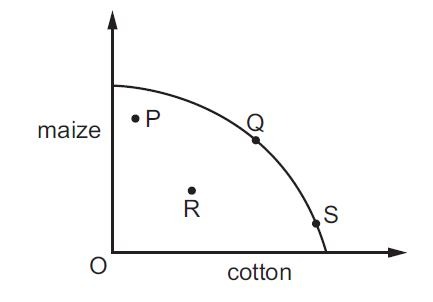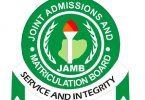Waec Past Questions and Answer For all candidates are now available. The West African Senior School Certificate Examination (WASSCE) is a type of standardized test taken in West Africa, mostly by students who wish to proceed to a higher institution. It is administered by the West African Examination Council (WAEC).
The resources below on Economics have been provided by WAEC to assist you to understand the required standards expected in Economics Final Examination. Students’ performance in the examination under review was done by the Chief examiner Questions.
The contents in each Waec Past Questions and Answer(for a specific year) are usually similar from one country to another. Questions on the WASSCE Economics section may be specified to be answered by candidates.
Waec Past Questions and Answer released here is a standard Waec Economics past paper which is good and did not deviate from those of the previous years. The questions were straightforward, unambiguous and spread to cover most aspects of the Syllabus. The rubrics were clearly stated.
However, there has been so much significant improvement in the overall candidates’ performance compared with those of the previous years because of the Past question that student engages themselves.

Waec Past Questions and Answer
WAEC ECONOMICS PAST QUESTION AND ANSWERS FOR 2023/2024
Carefully read and take note of the following questions and try to answer by choosing the option that best suit the question after that use your textbook to confirm it. Let’s get started with the Waec Past Questions and Answers.
WAEC PAST QUESTIONS AND ANSWER OBJECTIVE
1. Scarcity in economics means that _______
A. human wants are limitless
B. the economy has very few resources
C. the economy can scarcely produce anything
D. resources are limited.
2. Air is essential to life but commands no price! But Diamond is not essential to life but commands a high price! This is the paradox of ______
A. thrift B. value C. abundance D. scarcity.
3. Economics of scale operate only when ______
A. marginal cost is falling with input
B. average cost is falling with input
C. fixed cost is variable
D. variable cost is less than the fixed cost.
4. Efficiency in production involves _______
A. reducing the size of the workforce
B. producing a given output with the lowest cost combination of factors of production
D. increasing the quantity of the fixed factor of production.
5. An effect of inflation is that it ___________
A. discourages trade by barter
B. favours debtors at the expense of creditors
C. increases the real income of salary earners
D. increases the value of a country’s exports.
6. What could be the opportunity cost of a nuclear power station?
A. the running costs of the power station
B. a coal-fired power station
C. the current value of the power station
D. the cost of building the power station.
7. The diagram below shows a production possibility curve for maize and cotton.

Bad weather causes a poor harvest for both crops. Which movement could be used to represent this change?
A. P to R B. Q to R C. S to Q D. S to R.
8. The market for a good was in equilibrium. A change occurred which resulted in a new equilibrium with a higher price for the good and a lower quantity traded.
What change would have caused this?
A. the demand curve moved to the left
B. the demand curve moved to the right
C. the supply curve moved to the left
D. the supply curve moved to the right.
9. A demand curve shows the relationship between the quantity demanded and ________
A. a change in income
B. consumer tastes
C. the supply of the product
D. the price of the product.
10. A government subsidises the production of pineapples. This is likely to _______
A. increase the price of pineapples
B. raise the costs of supplying pineapples
C. raise revenue for the government
D. cause the supply of pineapples to increase at every price.
11. What indicates the existence of external costs in an economy?
A. An international trade deficit has caused the country to be in debt.
B. National companies have borrowed from foreign investors.
C. Private costs of production are less than social costs.
D. Private costs of production are more than social benefits.
12. What might be a disadvantage to a trade union when arguing for an increase in its members’ pay?
A. an increase in imports of a cheaper, similar product
B. the closure of a local training college resulting in fewer potential workers
C. the development of a new and profitable brand of the company’s product
D. the development of new techniques that increase productivity.
13. A German car manufacturer decided to produce its cars in a factory in China. What would not be a reason why they might have chosen to do this?
A. cheaper wage costs in China
B. the availability of raw materials
C. to gain external economies from skilled labour in China
D. to increase Germany self-sufficiency.
14. A government removed the quota on goods imported into the country.
What is the most likely result of this?
A. a decrease in demand for domestic production
B. a decrease in domestic unemployment
C. a decrease in exports
D. a decrease in the balance of trade deficit.
15. A modern corporation is owned by ________
A. debenture holders B. ordinary shareholders C. preference shareholders D. creditors.
16. One of the most important factors that should be considered in the location of an industry is _________
A. nearness to the financial centre
B. assured patronage by government functionaries
C. availability of inputs and market
D. availability of adequate security.
17. What is the term used to describe a policy aimed at promoting the local production of goods which are usually imported?
A. deregulation B. import substitution C. tariff reduction D. backward integration.
18. Progressive tax structure is designed to ___________
A. take more from the income of the poor
B. take more from the income of the rich
C. take equal proportion of income from both the rich and the poor
D. reduce the problems emanating from tax imposition.
19. Which of the following best describes the production function?
A. it indicates the best output to produce
B. it relates naira inputs to naira outputs
C. it relates physical outputs to physical inputs
D. it indicates the best way to combine factors to produce any given output.
20. Which of the following reward is associated with entrepreneurship as a factor of production?
A. salaries B. profits C. interest D. rents.
21. In a market economy, the question of what, how and for whom to produce are solved by the ________
A. elected representative of the people
B. planning committee
C. price mechanism
D. government.
22. At any given level of output, a firm’s total variable cost equals ________
A. total cost less marginal cost
B. total cost less total fixed cost
C. total cost less average cost
D. average variable cost and marginal variable cost.
Age groups (years) Distribution (%)
Above 60 30
15 – 60 45
0 – 14 25
23. From the above, the estimated dependency ratio of the population shown above is _______ A. 11: 9 B.9: 11 C. 7: 3 D. 3: 7
23. Which of the following factors is NOT responsible for the rural /urban drift in Nigeria?
A. the infrastructural facilities in the cities
B. declining fertility of rural farmlands
C. rural electrification programme
D. higher living standards in urban areas.
24. The necessity of choice is due to the fact that _______
A. human wants are inelastic
B. customers like to maximize satisfaction
C. resources are abundant
D. consumers are selective.
25. What is meant by labour supply?
A. number of people in working population
B. number of men and hours they work
C. number of hours during which the middle-aged persons work
D. number of workforce multiplied by the hours they worked .
26. Any payment to a factor of production in excess of what is necessary to keep its present employment is known as ________
A. real income B. profit C. economic rent D. real wage
27. The market where there are many differentiated products is called ______
A. monopoly B. perfect competition C. monopolistic competition D. Oligopoly.
1. One of the advantages of large-scale production is that
A. there is a rise in the cost of administration.
B. consumers sacrifice their individual tastes.
C. the firm can use labour-saving machinery.
D. the demand for a firm’s products becomes localized.
28. The location of timber and plywood industries in West Africa is mainly influenced by the availability of
A. transport.
B. water.
C. raw materials.
D. labour supply.
29. Malthus’ population theory states that
A. a high death rate may lead to low productivity.
B. population may outgrow the means of subsistence.
C. people will always decide to have children.
D. migration may leave some parts of the world barren.
30. Which of the following is not likely to be an effect of a growing population?
A. Rise in demand
B. Unemployment
C. Fall in the standard of living
D. High per capita income
31. Personal savings are generally low in West Africa because of
A. the level of income of the people.
B. the refusal of banks to grant loans.
C. overpopulation.
D. cheaper foreign currencies.
32. Devaluation of currency in a country is likely to lead to
A. increasing population.
B. increasing imports.
C. exports becoming cheaper.
D. reduced exports.
7. Which of the following is not a benefit derived from the petroleum industry?
A. Increased foreign exchange earnings
B. Establishment of refineries and petrochemical industries
C. Employment of a greater proportion of the population
D. Development of airports, seaports and other social infrastructure
33. An efficient weapon used in resolving disputes between employees is
A. co-operation.
B. collective bargaining.
C. display of placards.
D. legal action.
34. A country’s balance of payment is in deficit when
A. a country’s payments for imports of invisible goods are greater than her receipts from exports of invisible goods.
B. the total receipts from her export of visible and invisible goods are greater than her payments for visible and invisible imports.
C. it can record a surplus on the current account of her balance of payments accounts.
D. the total payments for visible and invisible imports are greater than the total receipts from her exports of visible and invisible goods.
35. Which of the following features best describes peasant agriculture in West Africa? It
A. specializes in the production of one crop.
B. involves the use of small farm holdings.
C. is a capital-intensive system of farming.
D. is mostly associated with tree crops
If actually, you are finding anything so complicated or have questions you want to ask kindly drop them down in our comment box below and we promise to attend to you the moment it gets to us.







wat of theory
I want to see theory
Ok, no problem you can kindly subscribe to get all the past questions and answers.
Hi please how do I subscribe to this?
Noted
I need the answers
theeooory
what about the answers to the questions for correction and also what about the theory section too
Actually you have to subscribe before you can get the past question and answers
We have inbox you on your gmail account.
How would I get the answers and theory
why do we have to subscribe
For you to get an update about the latest educations news on the particular article you check into.
ok thanks. But pls i need questions for all science subject pls
For you to have access to our past question a fee needs to be pay.
Please what of the answers to those questions and the theory part
I need d answers to the questions
Which question did you ask?
ok check your gmail…
I need the theory
What about the answer to the questions for correction please
What about the theory
Thanks
Please can I get the complete questions of this economics past questions
I need tomorrow economics question
Thanks so much for the material, it is good for the students.
Can your team work on the essays and provide answers to both the objectives and essays? This will be very essential.
however, the past questions post is con completed.
Thanks,
James V. Coleman
How do I subscribe to have access to past questions and answers
Answers please
Noted.
Theory, please 2021
Wow, this site awesome and usefu!!!
Please add me up on WhatsApp _08128903985, that’s my number.
Please I can’t find the answers and the theory
Answer please
Theory
What about the theory part
Pls can we see d answers and also d theory
What of the theory l need it
Check your gmail.
I need the answer to the objective and also theory questions and answers.
Please i need the answer to the question